3rd
Spring Pharmaceutical Synchrotron X-Ray Powder Diffraction Workshop
19th - 20th May 2023
Purdue University - Burton D. Morgan Center for Entrepreneurship MRGN, Room 121 | 201 W. State Street West Lafayette, IN 47907West Lafayette, IN 47906, USA
In organizing the 3rd edition of our SPS-XRPD workshop, our planning committee was comprised of representatives from Excelsus Structural Solutions, Purdue University, Improved Pharma, and Argonne National Laboratory.
We are delighted to have successfully hosted this highly anticipated and informative workshop after a three-year hiatus caused by pandemic-related restrictions. Following the previous workshops held at Purdue in 2018 and at the Paul Scherrer Institute in Switzerland in 2019, the workshop returned to Purdue in 2023. Attendees had the opportunity to network with solid-state experts from around the world, gain insights into the application of synchrotron-XRPD in addressing industrial drug development challenges, and participate in discussions on the crucial role of synchrotron-XRPD in patent litigation and intellectual property protection
DAY 1 - 19TH MAY 2023
| 8:00 am – 9:00 am | Get together breakfast & Registration |
| 9:00 am – 10:30 am | Background to the workshop (25+5m):
|
| 10:30 am – 11:00 am | Further questions to speakers |
| 11:00 am – 12:30 am | Networking lunch & real-time Acoustic Levitator demo |
| 12:30 pm – 12:35 pm | Welcome to the SPS-XRPD workshop |
| 9:00 am – 10:30 am | Regulatory aspects (25+5m)
|
| 3:00 pm – 4:30 pm | Coffee break & snacks and Round Table Discussion Further questions to RA and IP speakers - (Moderator: Steve Byrn) |
| 4:30 pm – 6:30 pm | Synchrotron advanced instrumentation and applications in Pharma (25+5m)
|
| 6:30pm -7:30 pm | Further questions to speakers - Comments from the audience |
| From 7:30 pm | Welcome dinner & Networking |
DAY 2 - 19TH MAY 2023
| From 8:15 am | Breakfast & Networking |
| 9:00 am – 10:30 am | Electron Diffraction & SAXS & complementary techniques (25+5m)
|
| 10:30 am – 11:00 am | Further questions to speakers and Coffee break |
| 11:00 am – 12:00 am | Pair Distribution Function instrumentation and applications – Part 1/2: talks (25+5m)
|
| 12:00 pm – 1:00 pm | Lunch |
| 1:00 pm – 3:30 pm | Pair Distribution Function instrumentation and applications – Part 2/2: (25+5m)
|
| 3:30 pm – 5:30 pm | Round table on role of polymorphism, S-XRPD and PDF - PDF guidelines, an update (Moderators: P. Smith, F. Gozzo, Ch. Benmore & S. Byrn) |
| 3:30 pm – 5:30 pm | Final remarks and announcement of the next SPS-XRPD meeting in Switzerland |

Senior scientists/ Physicist Advanced Photon Source - Argonne National Laboratory; Ph.D. in Physics, University of East Anglia, UK
benmore@anl.gov
Dr Benmore is a senior scientist at the Advanced Photon Source at the Argonne National Laboratory, where he has worked since 2007 in the area of high energy x-ray diffraction applied to disordered materials. He was born and educated in England, receiving his PhD from the University of East Anglia in 1993. He was postdoctoral fellow in Canada until 1996, which included a visiting appointment at Los Alamos Neutron Scattering Center. Chris has held staff positions at the Rutherford Appleton Laboratory, UK, and the Intense Pulsed Neutron Source at Argonne. Chris has been an adjunct professor at Arizona State University since 2008 and holds a joint appointment with the University of Chicago. He has published >275 papers and given over 120 invited talks. Chris’s research interests include x-ray and neutron diffraction methods applied to liquids, glasses and amorphous materials. Chris was awarded the University of Chicago medal for research in 2012.
What the Pair Distribution Function (PDF) can tell you about amorphous pharmaceuticals.
Chris J. Benmore, Advanced Photon Source, Argonne National Laboratory, USA. PDF analysis of high energy x-ray diffraction data represents a powerful tool for investigating the structure of molecular liquids, glasses and amorphous materials. However, the lack of periodic structure, often used as a starting point in the atomistic modeling of crystalline systems, is not applicable for these systems. Monte Carlo methods such as Empirical Potential Structure Refinement (EPSR) can provide 3-dimensional atomic models consistent with the measured x-ray structure factor, provided realistic chemical constraints are imposed. EPSR achieves this by using an approximate Lennard-Jones potential plus an empirical potential with partial charges to obtain representative atom-atom interactions. EPSR is particularly useful for x-ray structural studies of the disordered arrangements of molecules, because the scattering is dominated by the molecular backbones. Molecular models can be used to identify hydrogen bonding arrangements, the orientations of aromatic rings and clustering for example. Applications to aqueous solutions, polymers and pharmaceuticals will be presented.

Partner, Locke Lord LLP Chicago, IL, USA
Carolyn Blessing is a Partner in Locke Lord’s Chicago office and a member of the Firm’s IP Pharmaceutical Practice Group, concentrating her practice in IP pharmaceutical matters and Hatch-Waxman litigation. For nearly 15 years, Ms. Blessing has represented pharmaceutical and biotechnology companies in all aspects of federal intellectual property litigation, including fact and expert discovery, claim construction, pre-trial, trial, post-trial, and appellate phases. In particular, she has handled numerous matters for pharmaceutical clients focused on patent issues related to solid forms of active pharmaceutical ingredients, such as polymorphs, crystalline salts, and amorphous forms, including presenting and examining expert witnesses at deposition and trial on subjects related to XRPD. Before attending law school, Ms. Blessing gained practical experience working as a neurobiologist for a major pharmaceutical company as well as in academic laboratories where she gained research experience in areas of biochemistry, cellular biology, molecular biology, organic chemistry, neurobiology, and drug development.
Patent Litigation: The Generic Perspective
Carolyn A. Blessing
Locke Lord LLP, 111 S. Wacker Dr., Suite 4100, Chicago, IL 60606
When seeking to market the generic form a of a branded pharmaceutical product, companies often have to contend with patents related to solid forms of active pharmaceutical ingredients, such as polymorphs, crystalline salts, and amorphous forms. This presentation will briefly explain how generic companies view these patents as they evaluate strategies for developing their product, certifying with FDA, and ultimately during litigation.
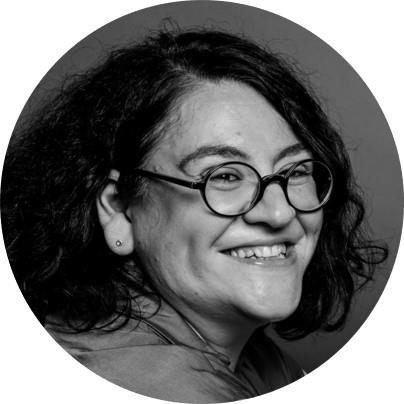
Information Scientist Malvern Panalytical GmbH, Kassel, Germany; Ph.D. Chemistry, University of Freiburg, Germany
natalia.dadivanyan@malvernpanalytical.com
Natalia has studied chemistry at Lomonosov Moscow State University (Russia). After completing her master thesis on polymer liquid crystals Natalia moved to University of Freiburg (Germany) to obtain her PhD degree working on liquid crystalline elastomers. This was followed by a post-doc position in the Eindhoven University of Technology (The Netherlands), where Natalia did research on organic semiconductors. In 2012 Natalia joined PANalytical, now Malvern Panalytical in Almelo (The Netherlands) as an Application Specialist in X-Ray Diffraction. Since 2016 Natalia is actively engaging with pharmaceutical industry trying to understand its workflows and challenges. In 2021 Natalia has moved into a role of Segment Marketing Manager at Malvern Panalytical, focusing on analytical solutions for small molecule pharmaceuticals.
Laboratory-based PDF: how far can we go?
Natalia Dadivanyan*, Detlef Beckers**, Thomas Degen**, Milen Gateshki**, Gwilherm Nénert**, Martin Schreyer** * Malvern Panalytical GmbH, Kassel, Germany **Malvern Panalytical B.V., Almelo, The Netherlands
Searching for more soluble and bioavailable substances often leads to working with amorphous forms of active pharmaceutical ingredients (APIs). In many cases the short-range structural arrangement directly determines the physical stability of drug substances or products.
However, amorphous materials have been mostly avoided in the past due to lack of reliable methods for their structural characterization and fingerprinting. The Pair Distribution Function (PDF) method has been suggested as an alternative fingerprinting approach to classic X-ray Powder Diffraction (XRPD) used for crystalline materials. This technique allows to study the short-range order of the material. PDF utilizes a Fourier transformation of the XRPD data and provides information about the inter-atomic distances of the material.
Recent advances in laboratory X-ray diffractometer technology like e.g. new generation detectors optimized for hard radiation (like Mo and Ag radiation) allow to minimize artifacts or fluctuations in the PDF arising from statistical noise, resulting in more reliable data. Thus, nowadays amorphous and nanocrystalline materials can be studied reliably directly in laboratory.
In this contribution we will describe PDF experiment on a laboratory instrument and will go through all steps of PDF analysis within Malvern Panalytical software package HighScore Suite. We will discuss how PDF on a laboratory scale compares to the PDF experiments done at synchrotron facilities. Using various examples, we will reflect on how far we can push laboratory PDF method.
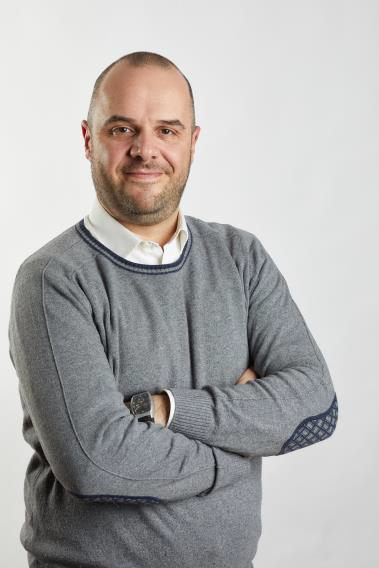
Aptuit, an Evotec Company, Verona, Italy
matteo.daldosso@evotec.com
Matteo has a strong background in the solid-state characterization of pharmaceutical and inorganic materials with expert understanding of the implications connected to the process of solid state profile determination in the pharmaceutical industry. His major responsibilities focus on crystalline structure elucidation, API form/version selection, drug developability, x-rays diffraction and scattering, thermal analysis, spectroscopy, regulatory compliance and data integrity. His career started with working experiences in various European organisations (ESRF, Grenoble, France; ISIS at the RAL, Oxfordshire, UK; University of Wroclaw, Poland; University of Verona, Italy) prior to joining GlaxoSmithKline as an Information scientist in 2006 at its Verona R&D site in Italy. He was eLNB (electronic laboratory notebook) product owner and System Support specialist before moving to the CMC area. In 2012 he became team coordinator, technical and project leader in the physical properties space (XRPD, TGA, DSC, Raman, FT-IR, Optical Microscopy, ESEM, Particle size, GVS, Solid State profile determination), in the solid state one (Polymorph and Salt Screening, Crystallization Development) and in drug developability aspects (preformulation and early formulation). In 2018 he took the full responsibility as a Manager of the Physical Properties & Preformulation Unit within the Analytical and Material Sciences Department at Aptuit, an Evotec Company, in Verona (Italy). He is currently covering the role of Material Science Scientific Leader, supporting the Global Pharmaceutical Development Business Line in delivering outstanding scientific output for projects and customer satisfaction, playing a transversal role for ensuring continued matrix support to the company.
XRPD ROLE IN PHARMA PRODUCTS CHARACTERIZATION AND CONTROL: QUALITY FRAMEWORKS AND GUIDELINES
Crystal structure of new chemical entities (NCE) became among the years a critical quality attribute of new API and drug products. Different Polymorphs may have different physico – chemical properties, affecting the performance in terms of efficacy and potentially safety of the pharmaceutical products (remember the Ritonavir Case?).
X-ray powder diffraction (XRPD) is a key tool for characterizing the structural order or disorder of solid APIs or DP, identifying the solid forms of any given polymorph,
solvate, co-crystal or salt by distinctive combinations of diffraction peaks and order parameters. XRPD is crucial for pharmaceutical products characterization and control.
Solid state scientists must face the challenge of obtaining XRPD data in compliance with the regulations (e.g., GMP), guidelines (e.g., ICH) and authority’s requirements and expectations since the objective of the characterization and QC activities is to ensure and assure that the pharmaceutical product can be released safely and in an accurate manner for human use with all the critical quality attributes under control.
This means to have in place an overall quality system of the lab that includes the solid-state techniques, like XRPD.
Starting from a Pharmaceutical Quality System Framework (e.g., ICH Q10), how to make sure that obtained XRPD data are in compliance with regulations (cGMP), guidelines (ICH), pharmacopeia (EUP, USP), regulatory requirements and expectations (EMA, FDA) will be matter of discussion as well as the pivotal importance of data integrity (ALCOA+, FDA CFR21 p11).

Assistant Physicist Advanced Photon Source (X-ray Science Division) Argonne National Laboratory
gallington@anl.gov
Dr. Leighanne Gallington is an Assistant Physicist in the X-ray Science Division at Argonne National Laboratory. She received her Ph.D. in Physical Chemistry from Georgia Institute of Technology in 2015, and completed her postdoc in the X-ray Science Division at Argonne. She supports x-ray total scattering and diffraction experiments at the Advanced Photon Source beamline 1-ID. Her primary research focus is on utilizing synchrotron diffraction for nonambient studies of a variety of oxymetallic systems.
Current software options for extracting pair distribution functions from x-ray total scattering data
The popularity of pair distribution function analysis of x-ray total scattering data has steadily risen as access to ex situ synchrotron data has expanded. Due to the broadening of the PDF user community, there is a growing demand for software for extraction of PDFs accessible to non-expert users. While user-friendly options have been developed over the past decade, care must be taken in both processing the data and understanding any limitations of the end result. Additionally, an awareness of competing conventions used for defining the PDF in the crystallography and liquids/glasses is crucial for both downstream analyses of the data and comparison to any existing literature. I aim to provide an overview and head to head comparison of current widely available software options for PDF extraction, with discussion of their strengths and limitations.
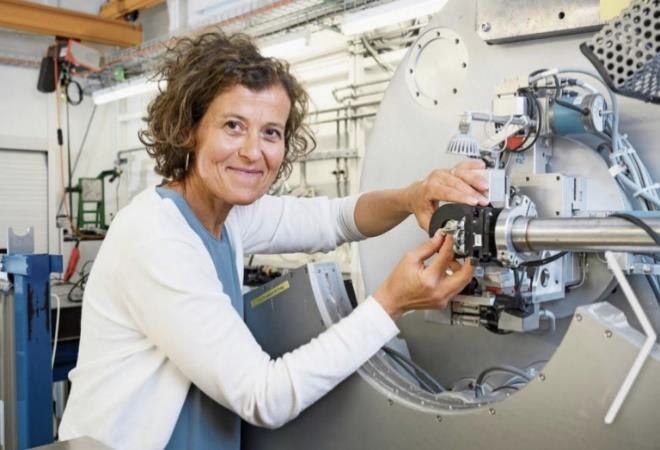
CEO & Founder
Excelsus Structural Solutions (Swiss) AG
M.S. in Physics, Universita’ degli Studi di Bari, Italy
Ph.D. in Physics, Swiss Federal Institute of Technology (EPFL), Lausanne, Switzerland
fabia.gozzo@excelsus2s.com
Fabia Gozzo has more than 30 years of practical experience with synchrotron facilities, in developing complex instrumentation and using it for the study of pharmaceuticals, pigments, food components, concrete and semiconductors. At the Paul Scherrer Institute, she has contributed to the growth of the Swiss Light Source synchrotron facility where she has developed for more than 10 years a state-of-the-art powder diffractometer, acknowledged in several scientific publications as one of the best ones in the world. In 2012, she has founded Excelsus Structural Solutions, a spin-off company of the Paul Scherrer Institute that offers analytical services based on synchrotron radiation to the pharma and chemical industry. Since 2016, Excelsus is part of Switzerland Innovation Company and since 2022 a WECONNECT INTERNATIONAL WomenOwned Certified Company. Fabia is recognized as a synchrotron- and powder diffraction expert and as such, is regularly invited at the international level as a speaker, lecturer and scientific advisor. She is author and co-author of more than 90 scientific articles and book chapters.
Synchrotron X-Ray Powder Diffraction
An overview of X-Ray Powder Diffraction (XRPD) and synchrotron XRPD will be given that allows participants to the workshop to get the necessary background to enjoy the workshop. Particular emphasis is given to the application of the technique to the structural and microstructural properties of pharmaceuticals. An overview of the latest advances in Level of Detection and Level of Quantification will also be discussed.
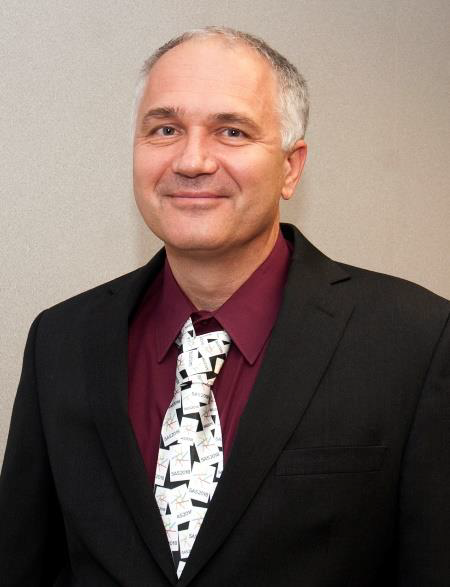
Physicist, X-ray Science Division, Advanced Photon Source,
Argonne National Laboratory, Argonne, IL, US.
Ilavsky@aps.anl.gov
Jan Ilavsky is beamline scientist of the USAXS/SAXS/WAXS instrument APS at X-ray Science Division, Advanced Photon Source. As beamline scientist Jan is responsible for operations and development of the USAXS/SAXS/WAXS instrument and provides before, during, and after experiment user support. This support includes working with 60+ user groups per year for up to 200 operations days/year. Jan develops, maintains, and upgrades USAXS/SAXS/WAXS hardware and software. Since early 2000’s Jan supports world-wide SAS community with his software tools for data reduction (Nika) and analysis (Irena), as well as provides interpretation/publication help to USAXS users as well as general SAS community collaborators.
Jan is author or co-author of well over 300 journal publications (with H-index (3/2023) over 50) and numerous invited and keynote conference lectures in the area of characterization of materials, mostly using scattering or imaging techniques.
Jan is actively supporting the small-angle scattering community as associate editor of J. Appl. Cryst, chair of IUCr Commission on Small-Angle Scattering, and is involved in other world-wide activities in area of SAS data standards, analysis, and absolute intensity calibration. Jan has organized/co-organized educational events such as (ANL and ORNL) X-ray and Neutron summer school, or Small-angle scattering short course (organized by APS small-angle scattering special interest group), SAS and software courses at conferences and facilities etc.
As materials scientists Jan is interested in developing of new methods for characterization of complex engineering materials in energy production, storage, and utilization; mitigation of impacts of energy production (CO2 retention etc.). His prime interest can be summarized as “applying advanced small-angle scattering techniques for understanding of in-situ/in-service microstructural changes of complex engineering materials.”
Small Angle Scattering technique: an overview
Small-angle scattering (SAS) is well known technique with over 80 years history. This seemingly simple method of characterization dimensions larger than 1nm has, in recent 20 years or so, seen rapid growth in capabilities and applications. Advancements in detectors technology, new desktop and large facilities (synchrotron X-ray and neutron) sources, and advanced analysis software supported by rapid growth of computing power available to users improved capabilities in traditional fields such as protein or fiber characterization. These new capabilities also enabled applications of SAS in less-traditional fields, such as food sciences. This presentation will discuss basics of the SAS technique – which problems are appropriate (and which are not appropriate), current instrumentation, theory, and modeling approaches. Selected examples will be used to document benefits of SAS techniques.
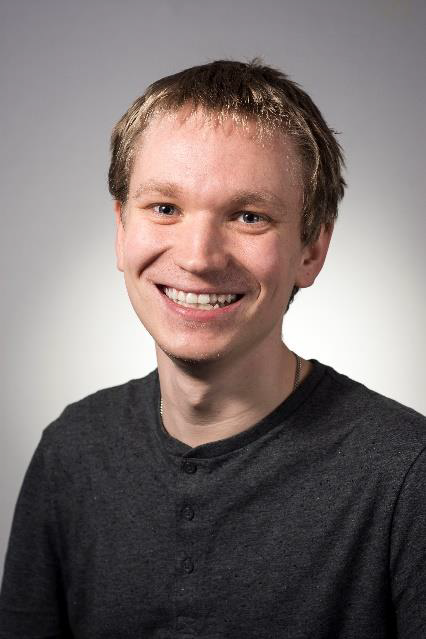
Senior Scientist
Deutsches Elektronen-Synchrotron DESY, Notkestraße 85, 22607 Hamburg, Germany
henrik.jeppesen@desy.de
Dr. Henrik S. Jeppesen obtained his PhD in Nanoscience from Aarhus university in 2021. He has since then been working as a beamline scientist and postdoctoral fellow at P02.1, PETRA III with a special expertise in the Pair Distribution Function method.
The industry-oriented powder diffraction and total scattering beamlines P02.1/P25 at PETRA III
Henrik Jeppesen
Deutsches Elektronen-Synchrotron DESY, Notkestraße 85, 22607 Hamburg, Germany
Understanding a material’s structure is of crucial importance to understand the properties it exhibits and thus how to make further improvements. At P02.1 and in future P25 at PETRA III, two powerful methods are utilised namely Powder X-Ray Diffraction (PXRD) and Pair Distribution Function (PDF). The former is an ideal method for investigating crystalline structures and the long-range ordered structures. PDF on the other hand is a versatile and rapidly developing method utilised to understand particularly the local short- to medium-range order of amorphous or crystallographically challenged materials. PDF, in fact, can be used to study a wide range of materials, including (but not limited to): glasses, powders, or liquids within research of nanoparticles, ceramics, metallic glasses, minerals, co-crystals, liquids, and pharmaceuticals to name a few. Both beamlines are designed with high precision measurements and throughput in mind enabling easy access for mail-in experiments. The talk will give a brief introduction to the methods above with examples of experiments and demonstrating the benefit of combining PXRD and PDF. Finally, the most recent developments and benefits of the beamlines, P02.1 and P25, are demonstrated.
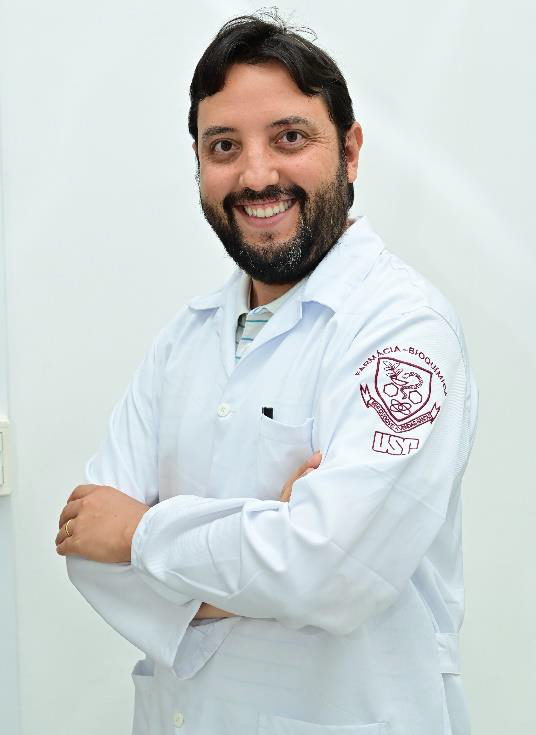
Associate Professor of Pharmacy
University of São Paulo- Brazil
gabriel.araujo@usp.br
Dr. Araujo is an Associate Professor of Pharmacy at the University of São Paulo with years of experience in Research, Development, and Innovation in large pharmaceutical companies. He holds a PharmD and a PhD in Drug Manufacturing and Quality Control from the University of São Paulo, and completed his postdoctoral training at Department of Industrial and Physical Pharmacy at Purdue University. has been awarded the Technological Development Productivity Scholarship from the Brazilian National Council for Scientific and Technological Development (CNPq) for his contributions to research and pharmaceutical innovation, having authored multiple articles and patents in pharmaceutical technology, and received awards for new leadership in research from the University of São Paulo and for pharmaceutical innovation from the Brazilian Academy of Pharmaceutical Sciences. His research interests include nanocrystals for cancer therapy, advanced solid-state strategies to improve solubility and accelerate drug development, pharmaceutical manufacturing.
A Deeper Dive into Amorphous Solid Dispersions: Evaluating Stability and Drug-Polymer Interactions using X-ray Pair Distribution Function (PDF) Analysis
In this talk, we will explore the use of X-ray Pair Distribution Function (PDF) analysis to evaluate the stability and drug-polymer interactions in amorphous solid dispersions for pharmaceutical formulations. PDF analysis provides insights into the local structure of these systems, making it a valuable tool for characterizing and evaluating their stability. Through the use of examples, we will demonstrate how PDF analysis can provide valuable information about these formulations and their behavior, illustrating key concepts and findings. Join us for an insightful discussion on the potential of PDF analysis for enhancing the development and optimization of amorphous solid dispersions.
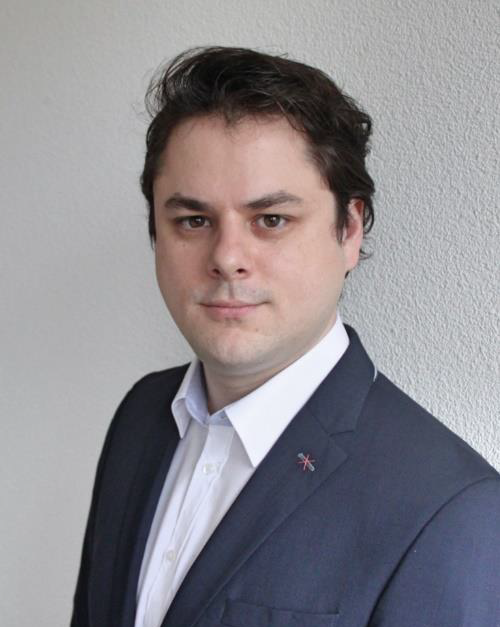
Senior Scientist & Assistant Director
Excelsus Structural Solutions (Swiss) AG
M.S. in Geomaterials and Geochemistry, Ludwig-Maximilian Universität, Technische Universität München, Munich, Germany
M.S. in Physics, Université de Rennes 1, Rennes, France
Ph.D. in Materials Science, Swiss Federal Institute of Technology Zurich (ETHZ) and Paul Scherrer Institute, Villigen, Switzerland
mickael.morin@excelsus2s.com
Dr Morin joined Excelsus in 2017 and has more than 10 years of experience in Neutron and X-ray powder diffraction techniques. He also has experience in crystal growth, solid state chemistry of complex oxides and bulk characterization. During his Ph.D. he was investigating the high-Tc multiferroic materials RBaCuFeO5 (R= Rare earth and Y). At Excelsus, Dr Morin is involved in several R&D projects, mainly related to enhancement of Level of Detection, he autonomously accesses to several synchrotron facilities in Europe. At Excelsus, he is mainly involved in projects related to intellectual property rights and patent litigations.
The Swiss Light Source and ALBA Powder Diffraction Stations
An overview of instrumentation available and capabilities developed at the Swiss Light Source and ALBA synchrotron Materials Science beamline Powder Diffraction X-Ray Powder Diffraction (XRPD) will be discussed, with emphasis on applications to pharmaceutical compounds. A fruitful synergy between our industrial applications and the scientific interests at these two facilities resulted in a win-win situation. Different configurations and set ups will be discussed and a few interesting examples of applications presented.

Associate Principal Scientist
Merck & Co. Inc.
Ph.D. in Chemistry, Purdue University
justin.newman@merck.com
Justin Newman is an Associate Principal Scientist at Merck & Co. Inc., working within the materials science group supporting various small molecule programs since 2016. In 2018 he took over as the small molecule crystallographer and is leading a small team supporting all small molecule structure solution requests for the pipeline. Prior to Merck, Justin received his PhD from the Chemistry department at Purdue University where he worked in Prof. Garth Simpson’s lab studying nonlinear optical microscopy. In his free time, he enjoys being outside and chasing his two little ones around.
Structure Elucidation Capabilities in the Pharmaceutical Industry: Polymorphs in a Pandemic
Justin A. Newman, Melissa Tan, Jameson Bothe, Andrew Brunskill
Analytical Research and Development, Merck & Co., Inc., Rahway, NJ, USA
In May 2020, Merck and Ridgeback Biotherapeutics announced a partnership to develop an oral antiviral compound, originally discovered at Emory University, as a treatment to reduce hospitalization and death associated with the novel coronavirus. This essential medicine promised to change the outlook of the pandemic by achieving sustained recovery.
During the development of molnupiravir and prior to achieving Emergency Use Authorization (EUA) from the FDA and other global regulatory agencies, two anhydrous polymorphs of molnupiravir—Form 1 and Form 2—were discovered, introducing questions around the stability, solubility, and bioavailability of each form. The crystal structure of Form 1 was confirmed by single crystal X-ray diffraction, and served as an important data point in assigning the tautomeric state of the compound in the solid state. In contrast, the structure of Form 2 was determined by Rietveld refinement with synchrotron powder diffraction data and corroborated by crystal structure prediction (CSP).
This talk provides an overview of structure elucidation capabilities in the pharmaceutical industry with a case study demonstrating the use of these tools to assist in characterization of the new polymorph, providing confidence in the form landscape, and positioning the team to successfully achieve EUA for molnupiravir both domestically and abroad.
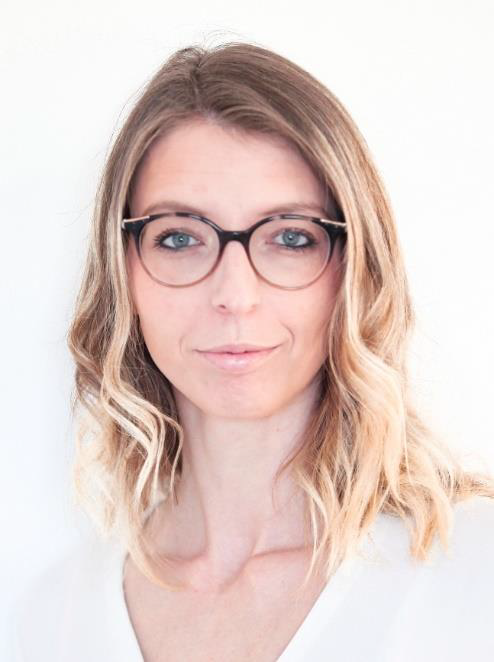
Senior Scientist & Assistant Director
Excelsus Structural Solutions (Swiss) AG
M.S. in Physics, Swiss Federal Institute of Technology (EPFL), Lausanne, Switzerland
Ph.D. in Experimental Physics, University of Zurich and Paul Scherrer Institute, Villigen, Switzerland
m.reinle-schmitt@excelsus2s.com
Dr Reinle-Schmitt joined Excelsus in 2016 and has more than 12 years of practical experience with synchrotron radiation instrumentation and technique, particularly in the field of powder and surface diffraction. She is involved in the development of methods and measurement strategies mostly related to quantitative phase analysis and pair distribution function measurements of pharmaceuticals via synchrotron-radiation x-ray powder diffraction. She is also the radiation safety reference person, and she contributes to the quality management system in place at Excelsus.
Advanced detection and quantification techniques
The latest advances in the detection and quantification of crystalline and amorphous phases will be discussed with significant examples of applications. In particular, a new methodology recently developed will be discussed, based on the control of the net mass weighted and measured, which allows us to obtain accurate and reproducible calibration curves down to extremely low Level of Quantification independently of volumetric inhomogeneities of physical mixtures. Furthermore, advances in the differential quantification of amorphous forms in pharmaceutical mixtures will also be discussed.

Dr. Gustavo Santiso-Quiñones was born in Guatemala City where he obtained his university degree in Chemistry (1997). He went to Germany to the Free University of Berlin where he obtained a Master degree in Chemistry (04/2000) and later his Ph. D degree (01/2005) in fluorine chemistry in the group of Prof. Dr. K. Seppelt. He has done Post-doctoral research activities in the University of Freiburg and RWTH-Aachen, Germany, and at the EPF-Lausanne, and ETH-Zürich, Switzerland. With more than 20 years of experience in the field of synthesis, crystallization and handling of sensitive or reactive materials and as many years of experience in the field of crystallography, he became independent and in 09-2014 founded in Switzerland his own company Crystallise! AG. Since 2014 he offers to the Pharma-, Agro-, and Chemical industries crystallographic services, including the crystallization of the compounds.
Gustavo is also the founder of Eldico Scientific AG, company which has been established in Switzerland since 2019. In collaboration with Dr. T. Grüne and others, their ideas and crystallographic approach to use Electron Diffraction (micro-ED) for organic compounds, got a Science nomination for “Breakthrough of the year 2018.”
Single crystal X-ray and Electron Diffraction experiments for the pharmaceutical industry:
From non-standard crystallization techniques to insitu-crystallization for ED experiments
Single crystal X-ray diffraction (SCXRD) and Electron Diffraction (ED) (also known as micro-ED) experiments are complementary techniques to XRPD which can provide answers which XRPD techniques might not be able to address. For example, SCXRD can provide a direct confirmation of the absolute configuration of an Active Pharmaceutical Ingredient (API). Furthermore, from SCXRD experiments, a simulation of the powder pattern can be produced which then can be compared to the experimental XRPD. Impurities, or other phases present in the bulk can be easily identified by a simple comparison, i.e, the finger print of the crystal measured is as pure as it could be.
ED is an emerging technique which has a lot of potential. ED experiments are equivalent to SCXRD experiments with the great advantage that nano-crystalline powders can be used instead of micro-sized crystals. Because in ED experiments, each nano-crystalline particle studied is treated as a single (nano)-crystal, electron diffraction can provide information which might not be detected or be available in standard XRPD experiments of the bulk. Furthermore, even when high resolution XRPD might detect a low-level impurity or an extra phase in the bulk, ED can provide easier the structure and therefore, a better understanding of the underlying problem.
Crystallise! AG will showcase some none-common crystallization experiments of APIs and chemical compounds and exemplify on the potential of SCXRD experiments as complementary technique for XRPD. Furthermore, we will talk about ED and the potential this technology has. Some case studies will be showcased too. Last but not least, Crystallise! will show a case study of a direct crystallization on TEM grids using < 10 μg of sample for ED experiments.

COO & Vice President
Improved Pharma, LLC
Ph.D. in Analytical Chemistry, Miami University, Oxford, OH, USA
pam.smith@improvedpharma.com
Pam Smith has 25 years of experience with pharmaceutical research and development, focused on solid-state chemistry. She originally joined SSCI as a well-known expert in microspectroscopy and quickly expanded her skillset to include IR, Raman and XRPD method development. During her tenure at SSCI, she became an ISSSP certified LSS Black Belt and ultimately assumed operational appointments including the General Manager of SSCI and the Vice President of Global Analytical Services for AMRI, the parent company of SSCI. In 2018, she joined Improved Pharma, a research, consulting, and information company dedicated to improving pharmaceutical methods, formulations, and processes. Her research focus was the application of synchrotron XRPD and PDF on the study of pharmaceutical substances and formulations, especially amorphous dispersions. In 2022 she became part owner of the company. Pam has almost 100 publications, presentations, and patents, and has received numerous awards over the years; the most notable of which was a recognition from the White House as a Changemaker in the Inaugural United State of Women Summit in Washington DC. The summit “celebrated extraordinary women who are creating change and growth on our world- women who are doing great things.”
Polymorphism in Pharmaceutical Applications
An introduction to polymorphism will be given to provide the workshop attendees with an appreciation for why solid-state form in pharmaceuticals is crucial for proper drug performance, and why XRPD is especially well-suited for the analysis of polymorphs.
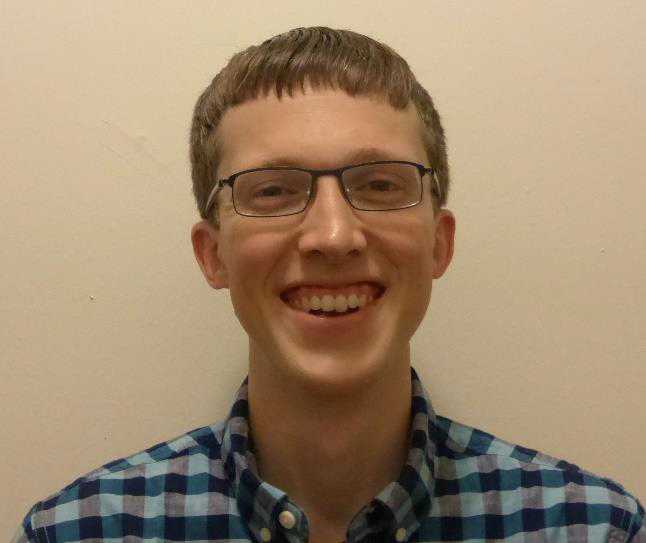
Senior R&D Scientist
Materials Development, Inc.
Evanston, IL - USA
swilke@matsdev.com
Stephen Wilke is a Senior R&D Scientist at Materials Development, Inc., in Evanston, IL, and a Visiting Scientist at the Advanced Photon Source at Argonne National Laboratory. His research focuses on the use of containerless processing, or levitation, to study the structure and properties of liquids, amorphous solids, and nonequilibrium materials. These investigations include X-ray and neutron scattering techniques, molecular structure modeling, and thermophysical property measurements in microgravity. Stephen holds a B.S. in Chemical Engineering from the California Institute of Technology and a Ph.D. in Materials Science and Engineering from Northwestern University.
Acoustic levitation and the pair distribution function: a structural probe of nonequilibrium processes for pharmaceutical products
Many aspects of pharmaceutical chemistry and formulation fall outside of thermodynamic equilibrium, including supercooled liquids, supersaturated solutions, and amorphous solid dispersions. Accessing and understanding such nonequilibrium pathways can generate novel polymorphs and lead to discovery of new properties. However, kinetic factors such as crystal nucleation often preclude exploration and measurement of nonequilibrium materials. Acoustic levitation provides one solution to these challenges by removing the container from the experiment, eliminating heterogeneous nucleation and enabling control of sample purity and chemistry. Using the force of standing acoustic waves, acoustic levitation can suspend liquid, gel, and solid samples in an environment with controlled gas, temperature, and relative humidity. Because the sample position is fixed, a variety of experimental techniques can be implemented to examine sample evolution during drying/hydration, heating/cooling, pH adjustment, chemical reactions, or other processes. As a case study, amorphous solid binaries of ketoprofen and polyvinylpyrrolidone (PVP) have been prepared by solvent evaporation in the acoustic levitator, and their structure is assessed with high-energy X-ray diffraction. Pair distribution function analysis shows that the molecular structures of levitation-processed products are similar to amorphous analogues prepared via melt quenching, spray drying, and rotary evaporation.











